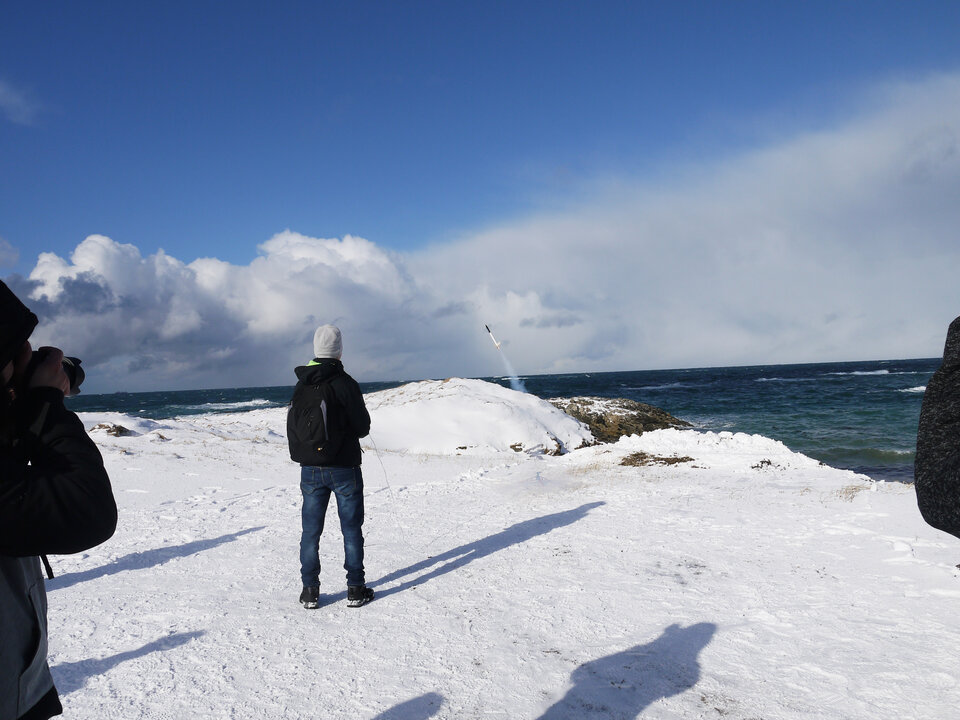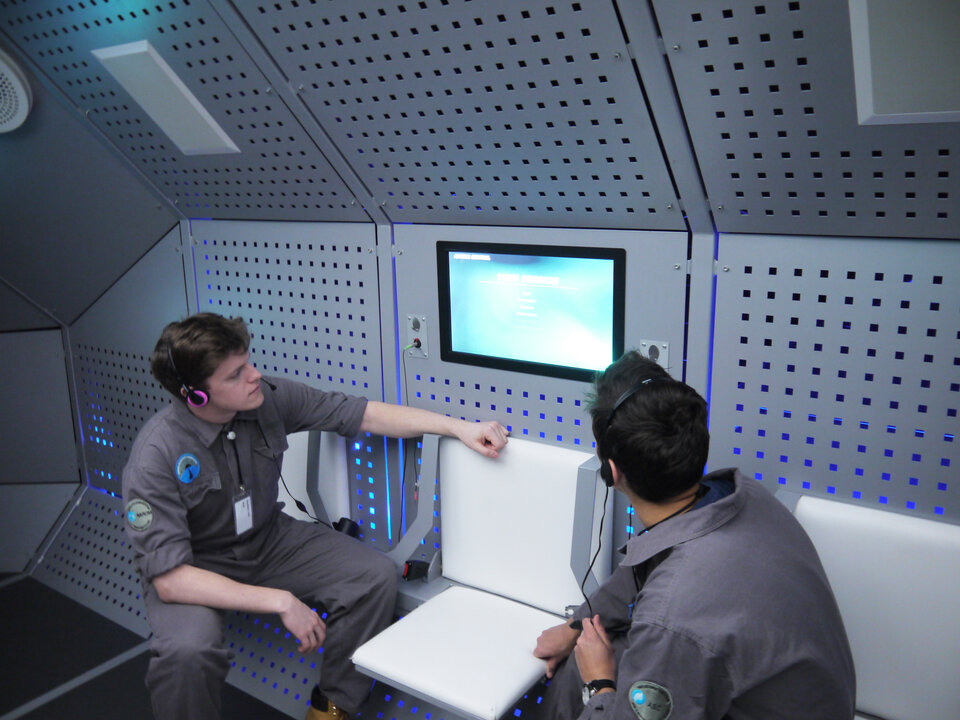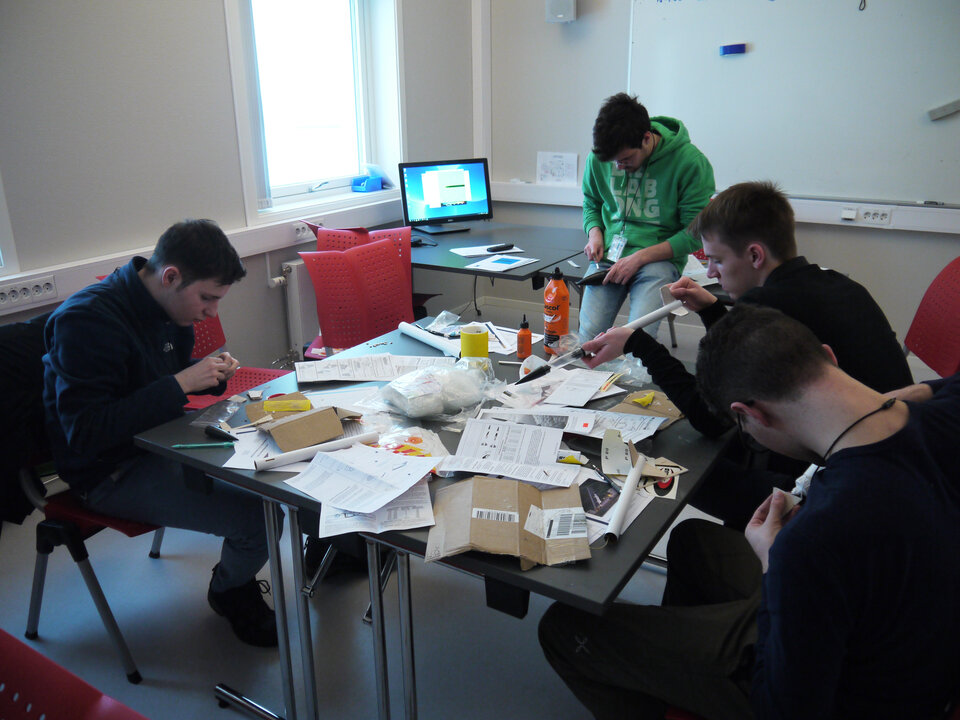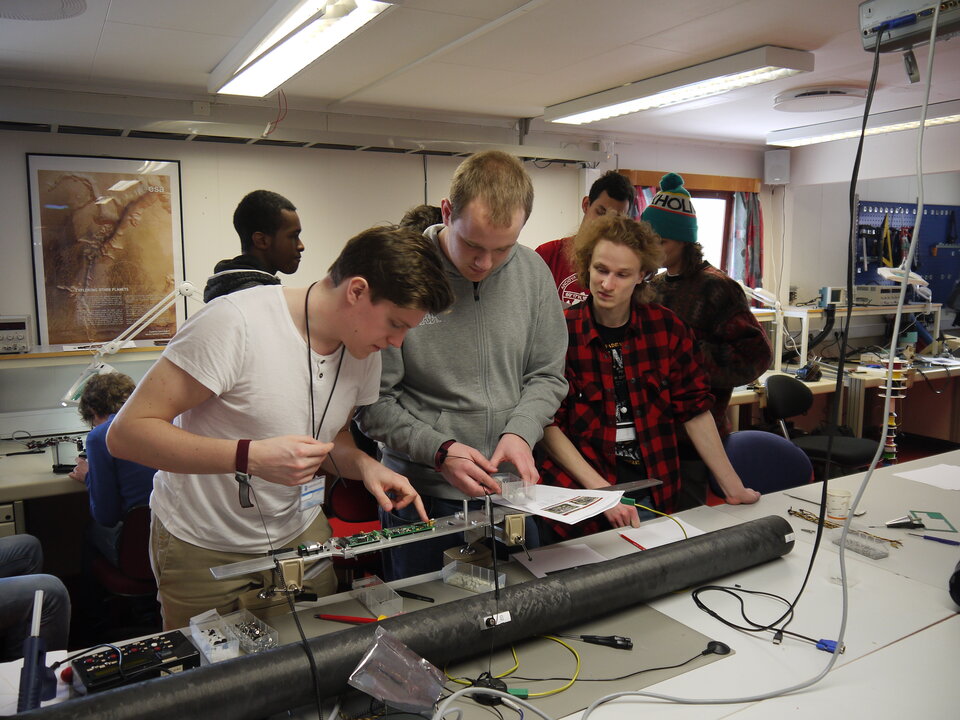The campaign
The campaign will be held at Andøya Space Centre, located near the small town of Andenes in Northern Norway. Participants in the programme will live and work on site for 5 days (6 nights).
Typical campaign schedule:
| Day 0 (Sunday): | Arrival at Andøya Space |
| Day 1 (Monday): | Welcome/introductions, guided tours, introduction to students |
| Day 2 (Tuesday): | Student rocket work, release of PTU probes |
| Day 3 (Wednesday): | Student rocket work, possible release of PTU probes, preparation of post-flight data analysis tools |
| Day 4 (Thursday): | Launch day! and post-flight data analysis |
| Day 5 (Friday): | Post-flight data analysis, results presentation, evaluation of the week and celebratory dinner |
| Day 6 (Saturday): | Departure |
Campaign Teams

During the campaign, participants are divided into four different sections with different specializations and responsibilities. When applying to participate in the programme, students will select their preferred section. The four campaign sections are:.
Flight Simulation
Students in this section will take a detailed look into numerical simulations, aerodynamics, rocket dynamics, and physical modelling.
For this, students in the science section will first be tasked with assembling an inertial measurement unit (IMU) and a GPS-sensor which both will be flown on the student rocket.
After constructing their sensors, the students will then spend some time on trajectory simulations. They will present the results of their simulations, such as simulated altitude, speed, acceleration, and other macro parameters to the other campaign participants. These results will give important insights to the other campaign sections and might influence the placement of sensors and the design and choice of scientific cases.
During launch, the students of the flight simulation section will be in the so-called Science Center, where they can monitor the live rocket data.
Telemetry
In this section, the students will set up the Andøya Space Education telemetry station, which includes an antenna, a downconverter, two receivers (for right- and left-hand polarization), bit-sync and combiner. The students learn not only to set it up, but also how each component works. This will help if they need to do any troubleshooting later on.
When the telemetry part is done, they will move on to set up Andøya Space Education's Dewesoft decoder, which is PC software based. After setting up the decoding, the students will prepare a MATLAB- or Python script that does some basic data processing of the data from Dewesoft.
During the launch the students in telemetry section will man two different TM- stations, one in the Andøya Space Education lab receiving the data from the rocket through the student TM-station that the student set up earlier in the week and one getting the signal from the Andøya Space Center main TM-station.
After the launch of the rocket, the students will prepare a first presentation of the preliminary data received from the rocket and hand-over the data to the rest of the students to perform further data analysis specific to their sensors and cases.

Payload
The students in the payload section are responsible of preparing the payload and integrating it in the rocket. They also will prepare all the custom wires needed for the sensors, encoder and power supply.
Furthermore, the payload students have to make sure that all the sensors on the rocket have been tested and qualified for launch, and are placed in the rocket as agreed with the sensor experiment section. The students will be responsible for final testing of the payload together with the telemetry section when the payload is fully integrated in the rocket.
Housekeeping sensors for battery voltage and current together with an internal and external temperature sensors will also be made by the payload team.

Sensor Experiments
This team will prepare all of the sensors that will be placed in the rocket (apart from the housekeeping sensors made by the payload team). In addition, they will prepare two weather balloon PTU probes and do some simulations of the rocket launch. The students will be divided into sub-groups of 1–3 students per rocket sensor or PTU probes.
The students are responsible for soldering and testing the sensors. They will learn how to convert the raw values received from the sensor into useful data and gain knowledge how the sensors work in detail.
The students will at the end of the campaign become experts on their specific sensors. In addition, they will get an overview of the other sensors through the presentations they will have for each other on the last campaign day.


